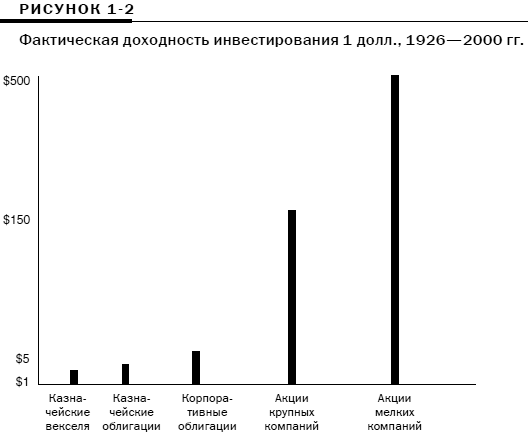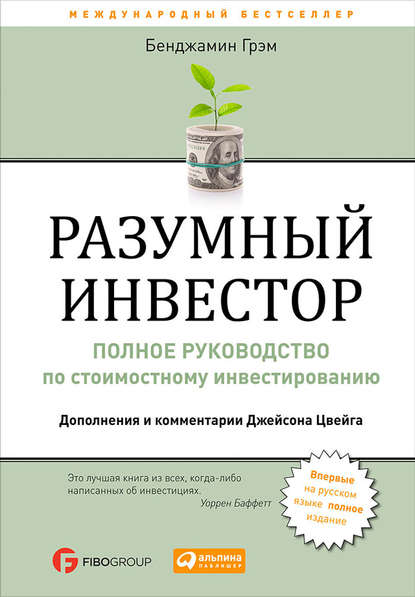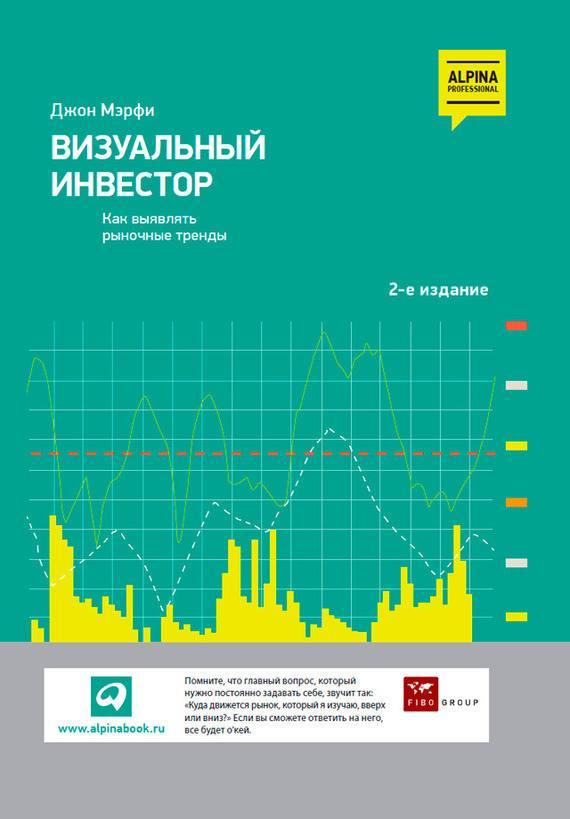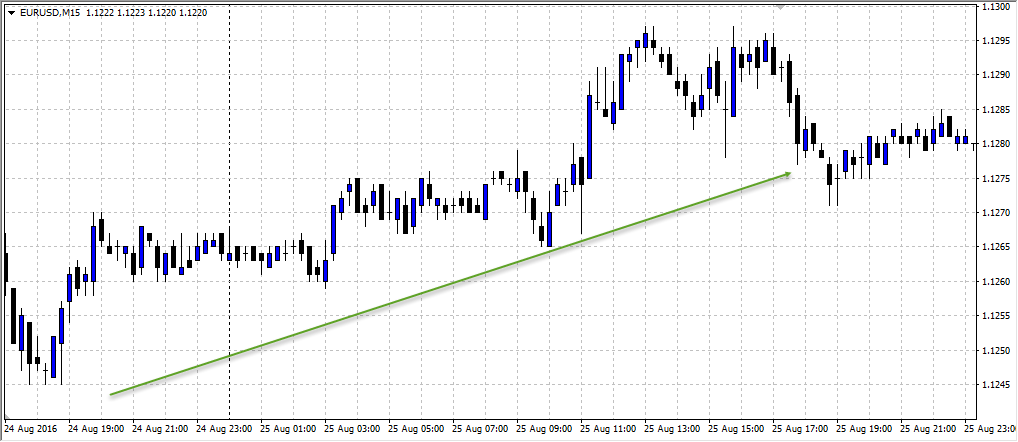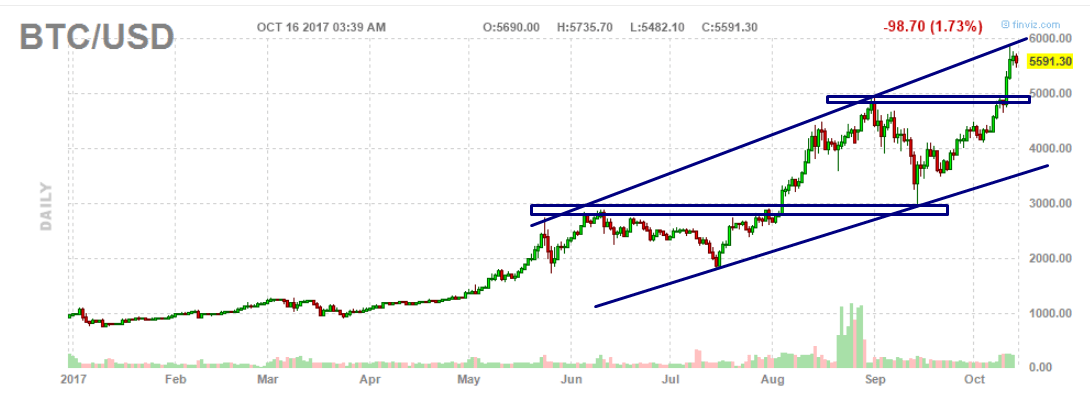
What types of people are threatened by frictional unemployment. Types of unemployment and examples. The main types of unemployment. Economic and social consequences of unemployment
Frictional unemployment
Economists use the term frictional unemployment (it is related to finding or waiting for work) to refer to workers who are looking for work or are waiting for a job in the near future.
The definition of “frictional” accurately reflects the essence of the phenomenon: the labor market is sloppy, not matching the number of jobs and workers.
Frictional unemployment is associated with the natural constant movement of the population. Since a person is given the freedom to choose his occupation and place of work, he uses this right. Some voluntarily change their jobs, others are looking for a new job due to dismissal. Some lose their temporary work, seasonal work, etc. Some people from this category are employed, some continue to look for work. Frictional unemployment is considered to be inevitable and desirable, since the initiative for dismissal comes from the person himself and many employees, when dismissed, switch from low-paying, unproductive work to higher-paying and more productive work. This means higher incomes for workers and a more rational distribution of labor resources.
Structural unemployment
Frictional unemployment quietly goes into the second category, which is called structural unemployment. Economists use this term to mean "compound." Structural unemployment characterizes the impossibility of employment due to differences in the structure of demand and supply of labor. Its reason is the economic processes of market functioning. Over time, important changes take place in the structure of consumer demand and in technology, which in turn change the structure of total demand for labor.
Due to such changes, the demand for certain types of professions decreases or ceases altogether. Demand for other professions, including new, previously non-existent, is increasing. Unemployment arises because the labor force is slow to respond and its structure does not fully correspond to the new structure of jobs. As a result, it turns out that some workers do not have the skills that can be quickly sold; their skills and experience are outdated and unnecessary due to changes in technology and the nature of consumer demand. In addition, the geographical distribution of jobs is constantly changing.
Cyclical unemployment
Cyclical unemployment refers to unemployment caused by a recession, that is, that phase of the economic cycle that is characterized by a lack of general or total expenses. Due to the decrease in demand for their products, employers are forced to reduce the number of employees, i.e. employment is declining, and unemployment is rising. For this reason, cyclical unemployment is sometimes called unemployment associated with a shortage of demand.
Hidden unemployment
Hidden unemployment is characterized by a situation in society when an employee is forced to agree to work in part-time jobs (part-time days, weeks or months). This type of unemployment is also associated with the presence of an unemployed population in society due to economic instability, when demand for labor is less than supply. Latent unemployment is divided into official and unofficial. Official hidden unemployment includes persons registered on statistics who are on administrative leave at the initiative of the administration, as well as persons who are forced to work part-time. The unofficial hidden unemployment should include the excessive internal production number of workers and those who are looking for work on their own.
Voluntary unemployment
Voluntary unemployment means that the employee does not want to work for the salary offered to him or for the offered specialty at the enterprise, waiting for a more suitable job.
Forced unemployment
Forced unemployment means any type of unemployment other than voluntary. This type of unemployment characterizes a situation when, in accordance with a collective agreement, a fixed-term wage is established at the enterprise that does not suit the employee. Pending revision of wages, involuntary unemployment may occur.
At the same time, it is customary to allocate types of unemployment relative to its duration in time. Distinguish:
1. long-term unemployment, which is observed in the absence of work for 4-8 months. Such unemployment is characterized by the onset of an employee's disqualification, the appearance of self-doubt, unwillingness to seek work on their own;
2. dunemployment lasting 8-18 months. In these conditions, the employee begins a general disqualification, loss of labor skills and ability to work intensively for the required time;
3. stagnant unemploymentfor more than 18 months. In these conditions, the degradation of the human labor potential. To restore a person’s previous attitude to work, an individual approach is necessary.
In addition to these, they distinguish between unemployment among the most vulnerable sectors of the population, for example women, youth, older people, people with disabilities, migrants, as well as seasonal unemployment.
Full employment does not mean an absolute absence of unemployment.
Economists consider frictional and structural unemployment to be absolutely inevitable: therefore, full employment is defined as employment constituting less than 100% of the workforce.
More precisely, the full-time unemployment rate is equal to the sum of the frictional and structural unemployment levels. In other words, the full-time unemployment rate is achieved when cyclical unemployment is zero.
Full-time unemployment rate also called natural unemployment rate.
There is even a country in rapid economic prosperity. Its reason is that an employee who is fired from his company or who left it of his own free will needs some time to find a new job. It should arrange it both by occupation, and by level of payment, and by many other criteria, and even if there are such places on the labor market, they cannot be found immediately.
There are always unemployed people on the labor market who are looking for work for the first time: young people demobilized from the ranks of the Russian army, women raising children, etc.
economic science considers frictional unemployment as a normal and non-alarming phenomenon, all the more so as it is of a short-term nature.
This type of unemployment is inevitable in any normally organized economy, because frictional unemployment reflects the freedom of people to choose their place of work.
Reasons for the growth of frictional unemployment:
1. lack of awareness of people about the possibility of finding work in their specialty with a suitable level of payment in specific firms.
2. Factors that objectively reduce labor mobility.
3. Features of national character and lifestyle. With this way of life (people prefer to live their whole lives in the same locality), labor flows between regions are reduced.
Structural unemployment.
It arises as a result of technological progress, which reduces the demand for workers in some professions and increases the demand for workers in other professions.
Structural unemployment is generated by the impossibility of finding a job due to differences in the structure of labor supply and demand in the labor markets of various professions. Such unemployment is more painful than frictional. Structural unemployment is impossible to avoid, this is due to the fact that technological progress constantly gives rise to new products, technologies and even entire industries. As a result, the structure of demand for labor changes dramatically, and people with more unnecessary professions join the ranks of the unemployed.
Structural unemployment, for all its soreness, may also not worry the country, but only if the total number of vacancies is not inferior to the number of people looking for work, although they have other specialties.
If there are fewer jobs than unemployed, this is bad. This means that the most unpleasant form of unemployment has arisen in the country - cyclical.
Cyclical unemployment is inherent in countries experiencing a general economic downturn. In this case, crisis phenomena occur in almost all commodity markets. Difficulties are experienced by most firms in the country, and therefore, mass layoffs begin almost simultaneously and everywhere. As a result, the total number of free places is less than the number of unemployed.
The category of unemployed include seasonal workers. They remain unemployed due to the fact that some activities can only be carried out during certain periods of the year. The most typical example is agricultural workers employed during the harvest period, the rest of the time interrupted by casual work. Seasonal unemployment is familiar to people of many professions, for example, to everyone who serves vacationers in resorts.
Underemployment - a situation in which an employee is formally considered employed, but does not receive wages, because is on forced leave or receives only part of his normal payment, as part-time.
In Russia, the labor market is regulated by the Law on Employment in the RSFSR, adopted in April 1991.
What is full time employment?
Can unemployment be completely defeated? And what do we mean by this question?
In the USSR, labor relations were built according to special rules:
Everyone has the right to work;
Everyone is obliged to work;
Anyone who does not work without good reason is subject to criminal penalties;
A person who often changes his place of work and profession is worthy only of contempt, and respect is only worthy of one who has worked all his life in one place;
The most scarce blessing - housing, a car, garden plots, can only be received by those who have worked in one place for 10-15 or more years.
The right to work without discrimination is one of the main rights of an individual, recognized in all civilized countries. And the basic rules of the Soviet Labor Code are antidemocratic and economically harmful.
Studying the problems of unemployment, economic science came to the conclusion: frictional and structural unemployment are normal phenomena and do not pose a threat to the development of the country. Moreover, development without them is simply not possible, because if all the employees are busy, then how to create new firms or expand the production of goods that are in high demand on the market. In addition, the presence of unemployment makes people fear the loss of their jobs and encourages them to work more productively and efficiently. From this perspective, unemployment can be called an incentive to work together.
Full employment in most countries of the world means the absence of cyclical unemployment, with the existence of frictional and static unemployment, i.e. this is the situation when unemployment in the country corresponds to its natural norm.
The natural rate of unemployment is a situation where only frictional and static unemployment exist in the country.
The level of full employment is determined by the equation:
Full employment \u003d labor force * (1 - natural rate of unemployment)
How can unemployment be reduced?
The level of frictional unemployment can be reduced due to:
1. Improving the information support of the labor market, in all countries this function is performed by employment organizations (labor exchanges). They collect information from employers about existing vacancies and report it to the unemployed;
2. Elimination of facts that reduce labor mobility. To do this, you must first of all:
a) the creation of a developed housing market;
b) increase in the scale of housing construction;
c) the abolition of administrative barriers to moving from one settlement to another;
Vocational retraining and retraining programs contribute to reducing structural unemployment.
The most difficult to deal with cyclical unemployment. For this task, you have to use many different measures:
1. Creating conditions for the growth of demand for goods:
a) export promotion;
2. Creating conditions for the growth of self-employment, a program for supporting small business;
3. Implementation of support programs for young workers.
The most difficult to deal with cyclical unemployment. To solve this problem, you have to use many different measures:
Creation of conditions for the growth of demand for goods:
a) export promotion;
b) support and encouragement of investments in the reconstruction of enterprises in order to increase the competitiveness of products;
Creation of conditions for the growth of self-employment, a program of support for small business;
Implementation of support programs for young workers.
The following methods can be used to help young people:
1) Creation of special firms offering jobs specifically to youth;
2) Creation of centers for training young people in precisely those professions whose chances of employment are highest;
3) Economic incentives for youth employment, for example, the provision of certain tax benefits to firms, in the staff of which, young workers make an agreed share.
Conditions for the occurrence of unemployment of various types:
Lesson 34. Employment management.
State policy in the field of employment.
Lesson 35. Calculating the unemployment rate.
In Russia, freedom of choice is assigned to each citizen by the country's main title document - the Constitution of the Russian Federation. “A man, his rights and freedoms are the highest value. The recognition, observance and protection of the rights and freedoms of man and citizen is the duty of the state ”- establishes article 2 of the Constitution of the Russian Federation. The main law of the country also stipulates the basic rights and freedoms of citizens, such as: freedom of a citizen, freedom of choice of place of residence and movement within the territory of the state, freedom of speech, freedom of conscience and religion, freedom of opinion, freedom of choice of profession and place of work and other rights and freedoms according to generally recognized principles and norms of international law. Article 17, paragraph 2 of the Constitution of the Russian Federation reads: "Fundamental human rights and freedoms are inalienable and belong to everyone from birth."
If we take the economic aspect of the life of modern society, the same principle of freedom of choice applies here - a citizen is free to make decisions regarding his own entrepreneurial activities. And he can choose the type of activity himself. The freedom to choose a person as a consumer is also protected by a law called the Law on the Protection of Consumer Rights. A person is free to decide on any purchase - both milk and a car. It all depends on the desire of the person himself: he can buy milk from a village cow or pasteurized in tetra packets. Or buy a car from a cheap neighbor, or take a loan to buy a six hundredth Mercedes.
Freedom of choice gives us the opportunity to be independent of both other people and other people's opinions. We choose with the mind, heart, soul, whoever we like, which are initially independent of external influences. The choice of a profession is determined by the abilities or ambitions inherent in each person, regardless of their social status and financial situation. The choice of place of residence is also an independent decision of a person, depending on his material capabilities and his ideas about comfort and prestige. The choice of the “second half”, in general, from a field that cannot be adequately explained. But also free choice, sometimes erroneous, but, more often, still happy.
But freedom of choice carries a huge responsibility - for your choice. Mistaken, a person spends a lot of strength and energy trying to return "to the true path." Unless, of course, those circumstances of life that led to his mistake in choice would suit him. Some people go with the flow without trying to fix something - it's easier, but it is also their conscious choice. There are people who seek to look into the future by all sorts of fortunetelling in order to predetermine their future fate and make a “right decision”. But fate severely punishes it - it can go according to an “unplanned scenario”, and then the “right decision” can become fatal.
In ordinary life, unfortunately, some individual citizens confuse two completely different concepts - freedom of choice and permissiveness. A person who is a representative of the executive branch has much less freedom of choice than an average person. The power gives additional powers, but it completely rejects freedom of expression. Some leaders of any government agencies forget about the responsibility that falls on their shoulders in connection with the exercise of their authority. And here, instead of freedom of choice, permissiveness comes, because it is a very attractive occupation to decide someone else's fate. It’s a complete feeling that “the one in power” has become both a king and God. Laws that are designed to protect the interests of all of Russian society begin to work for one “chosen one”. Our laws are not perfect, this is no secret to anyone. They can be compared with the nylon stocking of a corrupt woman, without size and without heel. As you like - and pull. Or how convenient. Or how profitable ...
Another moment is connected with freedom of choice. The Constitution of the Russian Federation in paragraph 3 of Article 17 expressly stipulates: "The exercise of the rights and freedoms of man and citizen must not violate the rights and freedoms of others." For some reason, no one remembers this clause of the country's main law, because everyone knows their rights by heart, but no one wants to know about their duties.
There is one more freedom - freedom of the individual, freedom of expression of will. It is given to us by the Almighty Creator. Such free creatures as angels are deprived of free will. And we have it. True, we take it for permissiveness, forgetting that we will have to answer for the Creator for everything. Anyway…
Unemployment is a phenomenon organically linked to the labor market. According to the definition of the International Labor Organization, anyone who is currently unemployed, looking for work and is ready to start it is recognized as unemployed. According to Russian law, able-bodied citizens who do not have work and earnings are recognized as unemployed, they are registered with the employment service in order to find a suitable job, they are looking for work and are ready to start it. Official unemployed are considered able-bodied citizens of working age (defined by law), permanently residing in the territory of this state, not employed, not engaged in entrepreneurial activity, not studying in full-time educational institutions or not undergoing military service and registered on the labor exchange (in public employment service).
Modern economists see unemployment as a natural and integral part of a market economy. In this regard, much attention is paid to the analysis of types of unemployment. The criterion for distinguishing between types of unemployment, as a rule, is the reason for its occurrence and duration, and the main types of unemployment are considered structural, frictional, and cyclic (market).
Over time, important changes take place in the structure of consumer demand, which, in turn, change the structure of total demand for workers. New, more modern goods and services are being created in the country that require the introduction of advanced technologies; accordingly, structural restructuring of production is being carried out with the reduction of old and the development of new economic facilities. In this regard, recruitment and training of personnel, advanced training of existing employees are carried out, and some of the employees may be released.
Released personnel cannot immediately solve their problems in the labor market, and some of them fall into the unemployed. This is because people, as a rule, react slowly to the emergence of new professions, as a result of which the structure of labor offers does not correspond to the structure of jobs and it turns out that some workers do not have the skills that employers need and these citizens become unemployed. This kind of unemployment is called structural. In this situation, the employer is the initiator of the dismissal. An example is the widespread introduction of personal electronic equipment, computers, which replaced and released a large number of junior staff from typists, accountants, clerks, and some other professions.
A number of Western economists emphasize a special kind of structural unemployment - unemployment expectations , which arises as a result of significant differences in the level of wages at various enterprises. So, some workers, having quit some enterprises, consciously expect the appearance of free jobs by their profession in other companies with higher wages. If a person is given the freedom to choose his type of activity and place of work, then at each specific moment some of the employees are in a position where they have already left their previous work but have not yet entered a new one. Some of them voluntarily change their jobs, others - for the first time looking for work, others - have finished seasonal work. Some people who are looking for suitable jobs find jobs, others temporarily leave their jobs, but overall, this type of unemployment remains. In this case, the labor market functions sloppy, as if “with a creak”, trying to bring into correspondence the quantity and quality of workers and available jobs. Similar unemployment is called frictional .
Since the initiative for dismissal in this case comes from the person himself, frictional unemployment is considered inevitable and, as some economists claim, desirable, since many workers who voluntarily remain without work switch from low-paid, ineffective to higher-paid and productive work, and this, in turn, it means improving the well-being of citizens and a more rational distribution of resources for labor. In essence, frictional unemployment is voluntary, and the resulting temporary unemployment of a citizen is not forced. In industrialized countries, frictional unemployment covers 2-3% of the economically active population. Frictional unemployment is considered inevitable, as it is due to the natural course of life. One must keep in mind a certain difference between structural and frictional unemployment. So, “frictional” unemployed have all the skills to find a job, while “structural” unemployed need additional training or retraining. The combination of structural and frictional unemployment determines, according to most economists, the level of natural unemployment. Frictional unemployment is the result of the dynamics of the labor market, and structural unemployment arises from the territorial or professional discrepancy between supply and demand in the labor market. Thus, the level of natural unemployment is the social minimum level below which it is impossible to fall and which corresponds to the concept of full employment. Moreover, full employment is understood not as general, but as employment, which does not exclude a certain natural level of unemployment.
Changing the situation on the market of goods and services, increasing competition between producers lead to the fact that part of the production reduces or even stops production, while dismissing part of the workers and causing serious problems in the labor market. In an economic downturn, when aggregate demand for goods and services decreases, employment decreases, and unemployment rises, a large army of unemployed appears, and unemployment of this kind is called opportunistic or cyclic . To mitigate the negative consequences of this type of unemployment, the development and adoption of special state-subsidized employment programs are needed. According to Western experts, during periods of economic ups and downs, the magnitude of cyclical unemployment can range from 0 to 8-10 percent or more, thereby significantly increasing the overall unemployment rate. The absence of cyclical unemployment in the country determines the natural level of unemployment. Employment in this case is defined as full. Another type of unemployment - seasonal unemployment, which is caused by the temporary nature of the performance of certain types of activities and the functioning of economic sectors. These include agricultural work, fishing, berry picking, rafting, hunting, partly construction and some other activities. In this case, individual citizens and even entire enterprises can work intensively for several weeks or months of the year, drastically reducing their activities the rest of the time. In the period of hard work, a massive recruitment takes place, and in the period of curtailment of work - mass layoffs. According to certain characteristics, this type of unemployment corresponds to cyclical unemployment, and to others, to frictional unemployment, since it is voluntary. The forecast of seasonal unemployment indicators can be determined with a high degree of accuracy, since it is repeated from year to year, and, accordingly, there is an opportunity to prepare for solving the problems caused by it. One type of unemployment is partial unemployment, which occurs as a result of a decrease in demand for enterprise products. In this case, two options for the entrepreneur’s behavior are possible: either he retains the opportunity to work for part of the staff full time, and the other part dismisses, or without dismissal he gives everyone the opportunity to work part-time, which leads to partial unemployment.
Analysis of economic indicators makes it possible to estimate the costs of unemployment. So, it is believed that with every increase in real production by 2%, the unemployment rate tends to decrease by 1%, and vice versa.
Another type of unemployment - stagnant unemployment.
It characterizes that part of the population that is constantly unemployed or is interrupted by casual earnings. This part of people, having lost their legal source of subsistence, as a rule, replenishes the ranks of the criminal world.
Based on the need to take into account the unemployed and take appropriate state measures to provide jobs for everyone, they distinguish: registered unemployment, which reflects the number of unemployed citizens who are looking for work, ready to start it and registered with the public employment service; hidden unemployment, which includes workers employed in production, but in reality being "superfluous". They, as a rule, either work part-time or a week through no fault of their own, or are sent on administrative holidays. There is also the so-called unemployment survey - an estimated value that characterizes the real situation in the labor market based on periodic special surveys of the able-bodied population.
In accordance with the methodology of the Federal Employment Service of Russia, prepared taking into account international standards, the unemployment rate indicator is defined as the ratio of the unemployed officially registered in the state employment service to the number of economically active population, expressed as a percentage. In this case, the number is determined by the employment service for a certain period (month, quarter, half year and year), the denominator is an indicator that is represented by the bodies of the State Committee on Statistics of Russia on the basis of a household survey conducted since 1992 on population employment problems.
Causes of Unemployment
The economic causes of unemployment include:
a). The high price of labor (salary) required by its seller or union.
The behavior of the buyer (employer) in the labor market is determined in these conditions by correlating the costs of purchasing labor and the income that he will receive from using it for a certain period of time with the costs that he will incur to purchase a machine replacing labor and that result that this machine will bring him. If such a comparison is in favor of the machine, then the entrepreneur will refuse to buy labor and will give preference to the machine. The manpower will be unsold, and he himself will be in the role of the unemployed. Scientific and technological progress and increasing the technical structure of production is one of the reasons for the growth of unemployment in modern conditions.
b) Low labor price (salary) set by the buyer (employer)
In this case, the seller (wage worker) refuses to sell his labor for nothing and is looking for another buyer. For a certain time, he may remain without work and be classified as unemployed.
in). Lack of value, and therefore the price of labor.
There are always people in society who cannot be involved in the production process due to their lack of labor as such or the availability of manpower of such poor quality that the buyer (employer) does not want to acquire it. These are tramps, declassified elements, people with disabilities, etc. This category of citizens, as a rule, loses their jobs forever and the hope of finding them falls into the category of stagnant unemployed.
Thus, the main cause of unemployment is an imbalance in the labor market. This imbalance is especially intensified during periods of economic downturn, war, natural disasters, etc.
Unemployment is an essential companion to a market economy. The reserve of labor within the natural norm is one of the factors of its effective functioning.
Consequences of unemployment
Unemployment entails serious economic and social costs. One of the main negative consequences of unemployment is the inoperative state of able-bodied citizens and, accordingly, output. If the economy is not able to satisfy the need for jobs for everyone who wants and can work, who is looking for work and is ready to start it, who wants and can work, who is looking for work and is ready to start it, then the potential for production of goods and services. Consequently, unemployment prevents the society from developing and moving forward taking into account its potential opportunities. Ultimately, this is seen as a decrease in economic growth, a lag in volumes of increase in gross national product. Underutilization of the production capabilities of society is predictable. Thus, some economists believe that a 1 percent increase in employment leads to a 2.5 percent lag in the real gross national product of potential GNP. In addition to purely economic costs, it is impossible to discount the significant social and moral consequences of unemployment, its negative impact on social values \u200b\u200band vital interests of citizens. Unemployment, no matter how level it is measured, is always a tragedy for those who are unemployed and cannot get a legitimate source of livelihood. Moreover, its consequences go far beyond material wealth. Long inactivity leads to loss of qualification, which finally kills the hope of finding a job in the specialty. The loss of a livelihood and a miserable existence lead to a decline in moral principles, loss of self-esteem, disintegration of the family, etc. Researchers find a direct link between rising suicides, homicides, mental illness, deaths from heart disease and high unemployment. Finally, history convincingly shows that mass unemployment leads to rapid, sometimes very violent social and political changes. That is why the state should not rely on the self-regulating role of the market in employment issues, but rather actively intervene in this process.
Ministry of Education of the Moscow Region
State educational institution
Secondary vocational education
Istra College of Education
Unemployment and its types
Performed by student
1 course 13-07 groups
Shutikova T.N.
Specialty 0201
Checked the work:
Teacher teacher
Sarycheva N.N.
Istra, 2008
Introduction
The concept of unemployment
Types of Unemployment
Causes of unemployment
Unemployment Methods
Conclusion
List of references
Introduction
Unemployment is a macroeconomic problem that has the most direct and strong impact on every person. Loss of work for most people means a decline in living standards and causes serious psychological trauma. It is therefore not surprising that the problem of unemployment is often the subject of political debate.
Psychologists have shown that the collision with unemployment negatively affects average life expectancy, health status, longevity and mortality rate, addiction to alcohol. Moreover, I would like to emphasize that not only family incomes are reduced, but people's self-esteem is also lost, there is a varying degree of complexity of the disease on the nerve ground and there is a sense of hopelessness in the future. A person simply loses the reference point and the meaning of the further struggle for life. He just begins to exist, not live. And this, in my opinion, is the worst, because the identity of the individual is lost. Unemployment exacerbates social tension in society, contributes to the growth of crime, drug addiction, disease. Therefore, the study of the problem of unemployment and the search for ways to solve it is not only important, but also a very urgent issue now.
In my work, I will consistently consider the concept and essence of unemployment, its causes and types.
The concept of "unemployment"
Unemployment is a complex multidimensional economic phenomenon inherent in a society with a market economy, when part of the able-bodied population is not involved in the production of goods and services, cannot realize its labor force in the labor market due to the absence (absolute or relative shortage) of suitable jobs, due to what wages are deprived of as the main source of necessary means of livelihood. In real economic life, unemployment appears as an excess of labor over demand for it. The extent of unemployment (the number of unemployed) in each particular period of economic development depends on the phase of the business cycle, the rate of economic growth and labor productivity, the degree to which the vocational qualification structure of the workforce matches its existing demand, the specific demographic situation, and the state employment policy. Unemployment intensifies during economic crises and subsequent depressions.
Official unemployed are considered able-bodied citizens of working age (defined by law), permanently residing in the territory of this state, not employed, not engaged in entrepreneurial activity, not studying in full-time educational institutions or not undergoing military service and registered on the labor exchange (in public employment service).
Modern economists see unemployment as a natural and integral part of a market economy. In this regard, much attention is paid to the analysis of types of unemployment. The criterion for distinguishing between types of unemployment, as a rule, is the cause of its occurrence and duration, and structural, frictional, and cyclical are considered the main types of unemployment.
Types of Unemployment
Frictional unemployment - this is when people have already left their previous job, but have not yet entered a new one. Some of them voluntarily change their jobs, others - for the first time looking for work, others - have finished seasonal work. Some people who are looking for suitable jobs find jobs, others temporarily leave their jobs, but overall, this type of unemployment remains. Frictional unemployment exists even in countries experiencing booming economies. Its reason is that an employee who was fired from his enterprise or left it of his own free will needs some time to find a new job. It should arrange it both by occupation and by level of payment. Even if there are such places on the labor market, they usually cannot be found immediately. The increase in frictional unemployment can cause a number of reasons: people's lack of knowledge about the possibility of finding a job in their specialty and with a suitable level of pay in specific firms; factors that objectively reduce labor mobility. Frictional unemployment is higher in those countries whose citizens prefer to live their whole lives in the same locality, that is, they are characterized by reduced mobility. Frictional unemployment quietly goes into another category, which is called structural unemployment.
Structural unemployment - It is connected with changes in technologies, as well as with the fact that the market for goods and services is constantly changing: new products appear that crowd out old ones that are not in demand. In this regard, enterprises are revising the structure of their resources and, in particular, labor resources. As a rule, the introduction of new technologies leads either to the dismissal of part of the workforce or to retraining of personnel. It is clear that the structure of production cannot remain unchanged. As a result of scientific and technological progress, technological changes, the structure of demand for labor is changing. The need for some types of professions is declining, while other specialties disappear altogether. But there is a demand for new professions that did not previously exist. A number of Western economists emphasize a special kind of structural unemployment - unemployment expectations , which arises as a result of significant differences in the level of wages at various enterprises. So, some workers, having quit some enterprises, consciously expect the appearance of free jobs by their profession in other companies with higher wages.
The emergence of structural unemployment means that many people will have to learn new professions, it is impossible to avoid structural unemployment. This is due to the fact that technological progress constantly gives rise to new products, technologies and even entire industries (currently, such industries are usually associated with computer technologies, such professions as a web designer, system administrator and many others have appeared) . As a result, the structure of labor demand is changing dramatically. And people with unnecessarily more unchanged professions are out of work, replenishing the ranks of the unemployed.
One must keep in mind a certain difference between structural and frictional unemployment. So, “frictional” unemployed have all the skills to find a job, while “structural” unemployed need additional training or retraining.
Cyclic or conjunctural unemployment - appears due to changes in the situation on the market of goods and services, increased competition between manufacturers leading to the fact that part of the production reduces or even stops production, while dismissing part of the workers and causing serious problems in the labor market. In an economic downturn, when aggregate demand for goods and services decreases, employment decreases, and unemployment rises, a significant army of unemployed people appears.
Seasonal unemployment - is generated by the temporary nature of the performance of certain types of activities and the functioning of economic sectors. These include agricultural work, fishing, berry picking, rafting, hunting, partly construction and some other activities. In this case, individual citizens and even entire enterprises can work intensively for several weeks or months of the year, drastically reducing their activities the rest of the time. In the period of hard work, a massive recruitment takes place, and in the period of curtailment of work - mass layoffs.
Partial unemployment - arises as a result of a decrease in demand for the products of the enterprise. In this case, two options for the entrepreneur’s behavior are possible: either he retains the opportunity to work for part of the staff full time, and the other part dismisses, or without dismissal he gives everyone the opportunity to work part-time, which leads to partial unemployment.
Stagnant unemployment - characterizes the part of the population that is constantly unemployed or is interrupted by random earnings. This part of people, having lost their legal source of subsistence, as a rule, replenishes the ranks of the criminal world.
3 registered unemployment - reflects the number of unemployed people who are looking for work, ready to start it and registered with the state employment service.
Hidden unemployment - it refers to workers employed in production, but in reality they are "superfluous." They, as a rule, either work part-time or a week through no fault of their own, or are sent on administrative holidays.
Survey Unemployment - an estimated value characterizing the real situation in the labor market based on periodic special surveys of the able-bodied population.
Voluntary - arises as a result of the dismissal of an employee of his own free will, mainly for personal reasons. This may be dissatisfaction with the level of wages, working conditions or other circumstances in which the employee quits, even against the will of the employer.
Forced unemployment - is the result of a reduction in the need for labor due to adverse business conditions, structural changes in products, production technologies. It also arises due to the lack of raw materials, energy, components that led to the shutdown of the enterprise, is generated by new conditions for the functioning of enterprises and forms of employment, as well as involuntary resettlement.


